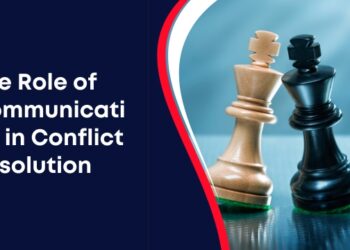In today’s fast-paced workplace, conflict is almost inevitable. Different personalities, work styles, and opinions can lead to disagreements, disrupting team harmony. However, creating a conflict-resilient work environment is not only possible; it’s essential for fostering productivity and positivity. In this article, we’ll explore practical steps to build such an environment while keeping the tone relatable and engaging.
Foster Open Communication
The cornerstone of a conflict-resilient environment is open communication. When team members feel safe expressing their thoughts and feelings, they’re less likely to bottle things up until they explode. Here are a few ways to encourage open dialogue:
- Regular Check-ins: Schedule weekly meetings where team members can share their thoughts and concerns. This creates a routine for communication.
- Encourage Feedback: Make it clear that feedback, whether it’s positive or constructive, is welcomed. Consider implementing anonymous feedback tools to make team members feel more comfortable.
- Active Listening: Encourage team members to practice active listening. This means truly hearing what others are saying without planning your response while they talk.
Promote Team Collaboration
Collaboration is key to preventing conflicts. People develop a sense of fellowship when working together towards a common goal. Here are some tips to enhance Team Collaboration:
- Team-building Activities: Organize regular team-building exercises in and out of the office. This could be as simple as a team lunch or as elaborate as an escape room challenge. The more your team bonds, the more they’ll support each other.
- Shared Goals: Clearly define team goals and ensure everyone understands their role in achieving them. Misunderstandings are less likely to occur when everyone is on the same page.
- Diversity of Thought: Embrace diverse perspectives. Different backgrounds and experiences can lead to innovative ideas and solutions, reducing the likelihood of conflict over differing opinions.
Establish Clear Guidelines
Having clear guidelines can significantly reduce conflicts. When everyone knows the rules of engagement, it’s easier to navigate disagreements. Here’s how to establish effective guidelines:
- Conflict Resolution Protocols: Create a step-by-step process for resolving conflicts. This should include who to approach, how to communicate, and the timeline.
- Define Roles and Responsibilities: Clearly outline each team member’s role. Well-defined responsibilities minimize overlap and potential disputes.
- Encourage Respectful Communication: Establish ground rules for communication, emphasizing respect and professionalism. For instance, “I” statements can help express feelings without blaming others.
Embrace a Growth Mindset
A growth mindset is the belief that abilities and intelligence can be developed through dedication and hard work. This mindset encourages resilience in the face of conflict. Here’s how to promote this attitude:
- Encourage Learning from Mistakes: Create a culture where mistakes are seen as learning opportunities. When team members understand that conflicts can lead to growth, they’ll approach them with a more positive outlook.
- Celebrate Successes: Acknowledge and celebrate when conflicts are resolved positively. This reinforces the idea that challenges can lead to better outcomes.
- Promote Adaptability: Encourage team members to be open to change and adaptable in their roles. This flexibility can help mitigate potential conflicts before they escalate.
Train for Conflict Resolution
Training can equip your team with the tools to handle conflicts effectively. Here’s how to approach this:
- Workshops and Seminars: Organize workshops on conflict resolution, communication skills, and emotional intelligence. These sessions can provide valuable insights and techniques.
- Role-playing Scenarios: Encourage team members to engage in role-playing exercises. This helps them practice conflict resolution in a safe space and builds empathy as they see situations from different perspectives.
- Mentorship Programs: Pair team members with mentors who can help them navigate conflicts. Having a trusted mentor can make a world of difference.
Creating a conflict-resilient work environment is not a one-time effort but an ongoing process. Organizations can transform how they handle disagreements by fostering open communication, promoting collaboration, training for conflict resolution, and embracing a growth mindset. Conflicts don’t have to be destructive; the right approach can lead to growth, innovation, and stronger teams.





